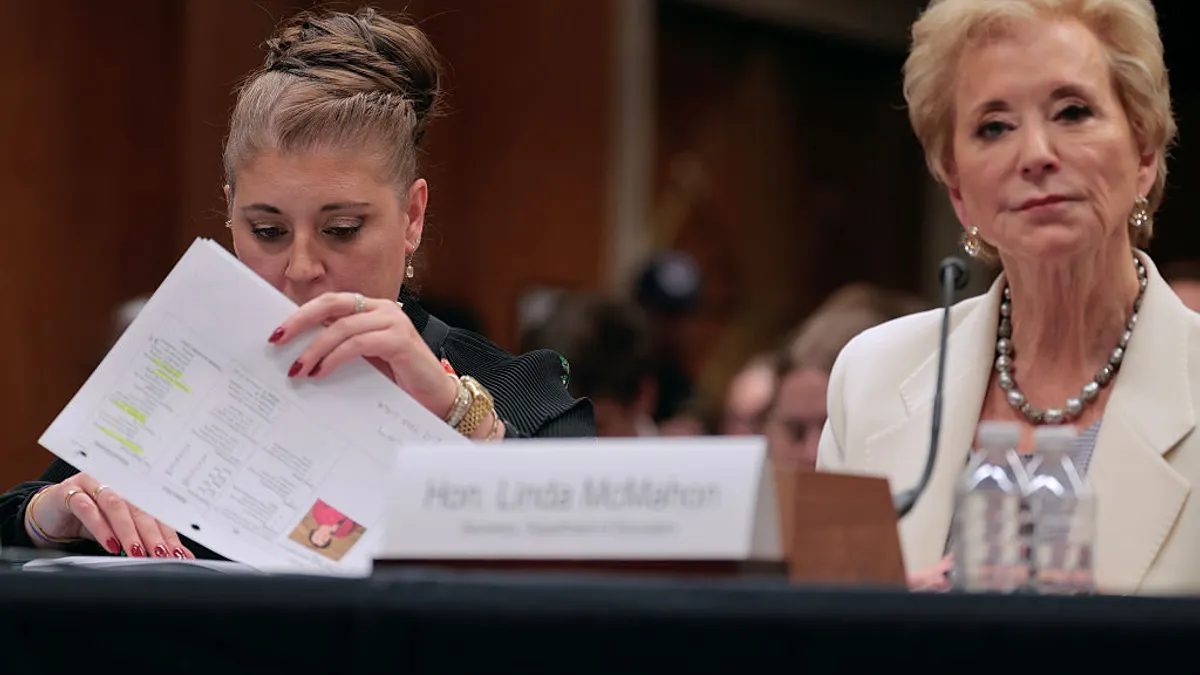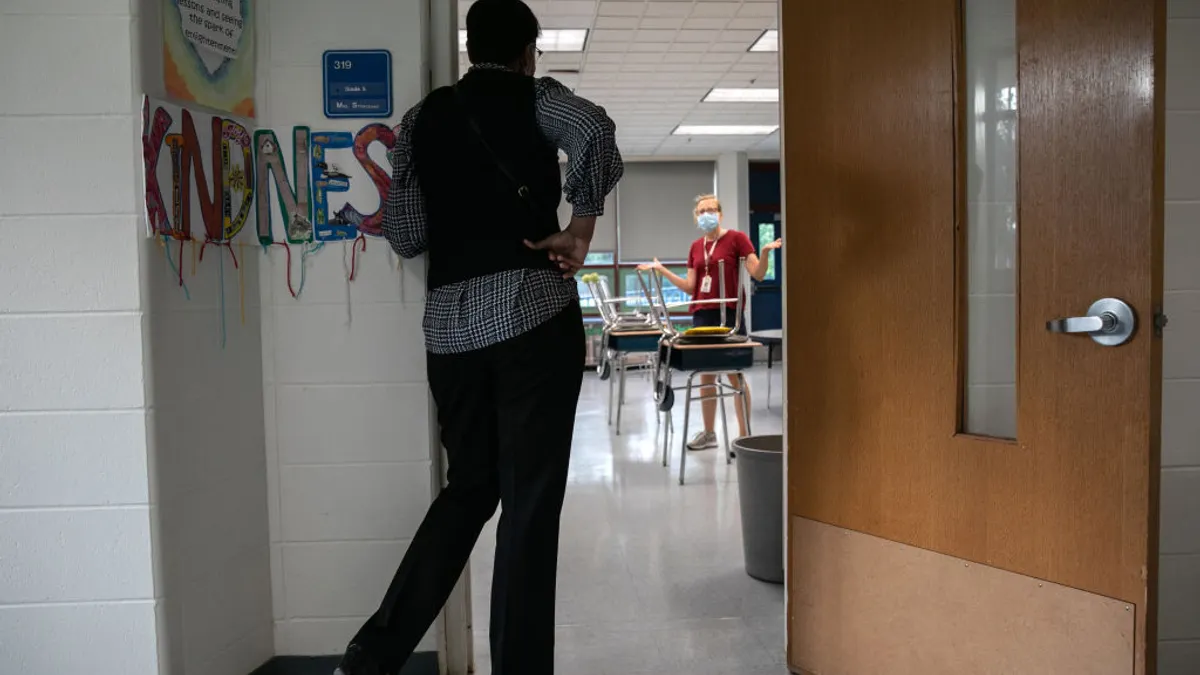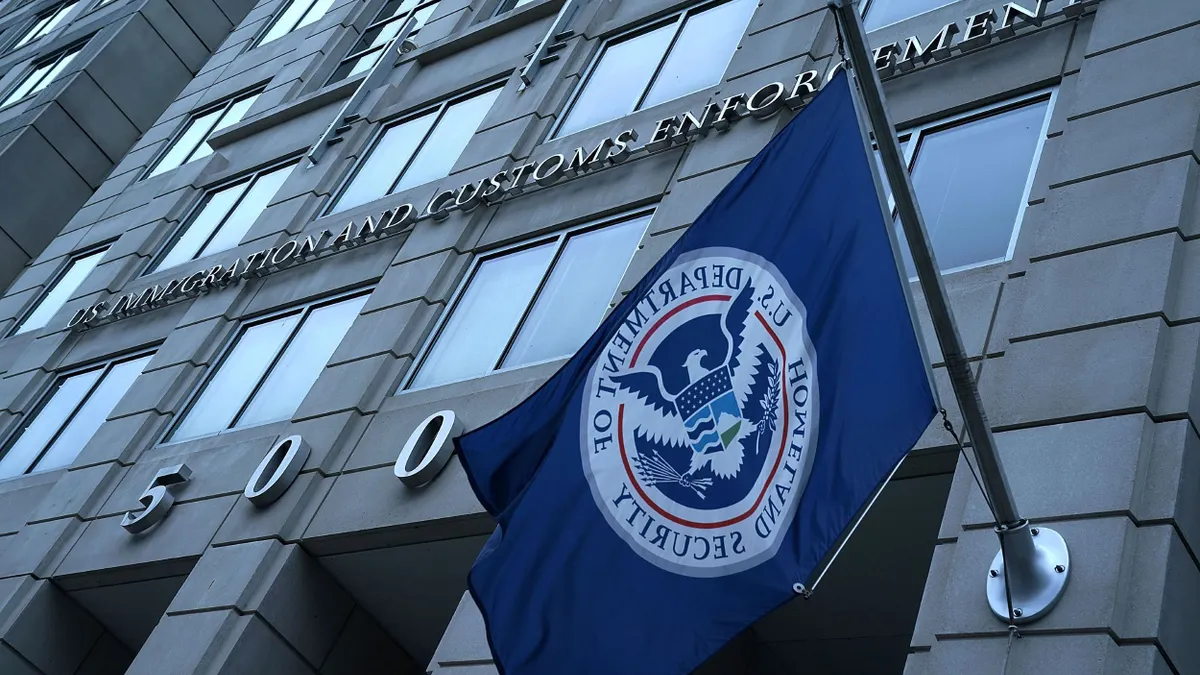A dozen states and their school districts are more vulnerable to federal funding rollbacks than others in K-12 because of their higher proportions of high-need districts and students living in poverty, according to an analysis from nonprofit group Education Resource Strategies.
Another risk factor for the 12 states is their higher dependency on federal funding: 16% of Alaska's total education revenue, for example, came from the federal government in 2021-22. Nationally, 13.7% of public school funding came from the federal government that school year, according to USA Facts.
According to ERS, there are 12 states that meet all three risk factors: Alabama, Arkansas, Kentucky, Louisiana, Mississippi, New Mexico, North Carolina, Oklahoma, South Carolina, Tennessee, Texas and West Virginia.
In addition to the three risk factors reviewed by ERS, states and public schools are facing myriad other funding pressures, including federal fiscal delays and cutbacks, the end of COVID-19 emergency aid and competition from school choice options.
Although most funding for public schools comes from local and state coffers, reductions in federal revenue could lead to school-level impacts, including staff reductions or program cancellations, ERS said.
3 risk factors
In its analysis, ERS considered three risk factors that would make states more vulnerable to federal funding cuts. The first is a higher reliance on federal funds as a percentage of total education revenue.
While federal funding has an impact on all states, those where federal funds exceed 10% of total K-12 revenue could be more vulnerable, ERS analysts said.
The analysis considered all federal funding directed to public K-12 districts, including Medicaid reimbursements and Supplemental Nutrition Assistance Program benefits. The analysis did not consider federal pandemic emergency funding.
The second risk factor is the percentage of districts in a state serving students living in poverty.
Districts serving a high proportion of students living in poverty rely the most on federal funding, as federal grants support low income students and districts.
The ERS analysis said states that have more than 30% of districts defined as “high-need” means that many districts would be impacted by reductions or disruptions in federal funding. A high-need district is one in which more than 20% of students live in poverty.
In Louisiana, for example, 81% of the state's 69 public school districts qualify as high-need, which could be a challenge for Louisiana should Congress reduce federal funding for FY 2026, ERS said.
The third risk factor is the percentage of students attending a high-need district. The analysis measured this as a risk factor if more than 20% of a state's students attend a high-need district. For those states, many families would be impacted by any federal budget reductions, even if a family is not low income.
ERS points out, however, that even if a state has a lower number of high-need districts, those few districts could be serving a large number of students. For example, only 12% of New York's districts are considered high-need, but because New York City — a high-need district — serves more than 1 million students, 52% of the state's students are served by a high-need district.
An 'unprecedented level of uncertainty'
“It’s important for stakeholders to understand the challenges that schools and districts might face if federal funding cuts do happen, and to recognize that the impact will be different” depending on the risk factors, said Betty Chang, managing partner at ERS.
“Districts are facing a pretty unprecedented level of uncertainty when it comes to their financial forecast," Chang added.
Congress is currently considering the budget for fiscal year 2026. President Donald Trump has proposed funding the U.S. Department of Education at $66.7 billion, and the Senate Appropriations Committee recommended $79 billion, or about $300 million more than current budget. The federal fiscal year begins Oct. 1.
Last month, the release of $6.2 billion in federal grant funding for several programs, such as English learning and after-school, was delayed as the White House’s Office of Management and Budget conducted a review to ensure compliance with Trump's directives. The funding limbo caused some districts to reduce staff and cancel programs, according to educators and lawmakers.
A Moody’s Ratings report released last month, meanwhile, said districts that have strong budget management and the capacity to increase revenue, as well as access to state funding, will be on stronger financial footing to adjust to federal policy changes.






 Dive Awards
Dive Awards














